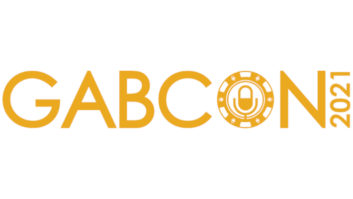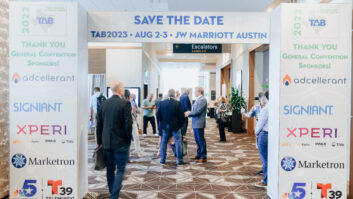With summer coming toward its end, stations everywhere are booking those last few beach parties, night club remotes and summer concerts. Before long, it will be time to sweep the sand out of the station van and head back into the studio.
It is also going to be a good time to freshen up around the facility and beef up some studio gear.
You already have put in that mega-digital infrastructure, so the hard work is done. Now, let’s think about products that will hike productivity, improve audio quality and bring the rest of the facility up to spec. So much good stuff is out there right now and so much of it is really quite affordable. And lots of new products — especially microphones — just look flat-out cool!

Magix software suites have features and versatility suitable to radio uses. Much of this list was gathered along the way in recent travels. The Audio Engineering Society (AES) convention last October in New York also was a goldmine for new equipment. Many products included here are crossovers from other industries — music production, television, film and multimedia — but are plenty relevant to radio production and on-air performance. Digital editors, signal processing, field recorders and microphones are standouts for the radio pro.
Recording and editing
That copy of Steinberg “Avalon” for the Atari computer never really cut it as a proper DAW, so let’s lose that first.
In terms of standalone editors, three major commercial players in the production room have been Pro Tools, Adobe Audition (and its earlier incarnation Cool Edit) and SAW Studio. This does not include stock editors bundled with whatever automation/audio management systems are in use at the station level. There are greater choices to be had for handling radio production, many of which include some of the hottest effects and sonic tricks available today.
Let me atone for picking on Steinberg, by starting with the high-powered Nuendo 4 environment, suitable for studio and live recording. Nuendo includes 38 VST3 audio plug-ins and the high-speed MediaBay, a fast clip browser capable of auditioning audio, video and MIDI files. Nuendo syncs to hardware controllers and is cross-platform on both Mac OS X V10.4 and Windows XP/Vista. (Since Al wrote, Nuendo 5 has begun shipping. One highlight is Windows 7-compatibility — Ed.)

Cakewalk and Roland produced Sonar 8.5 Producer. More affordable and still feature-packed, Cubase 5 from Steinberg allows loop mash-ups, on-th- fly pitch correction and unlimited simultaneous audio track playback. Again designed more for musicians than broadcasters, Cubase nevertheless has features that place radio production on par with contemporary music formats. Imaging and creative work is not intrusive.
Also from Europe come Samplitude and Sequoia, both from Magix of Germany. While engineered more for MIDI music and multimedia production than strictly for radio, these software suites contain features and versatility well suited on both the station and production house levels.
Samplitude includes effects in demand like pitch correction, cleaning and restoration tools, full dynamics and EQ, and spectral cleaning — the ability to examine audio as a spectral image and selectively “lasso” coughs and dropouts for precise editing.
Sequoia uses the same Hybrid Audio Engine but adds to the feature set with up to 12 surround channels and radio content management system (CMS) integration. A project created in Sequoia is exported in the proper format and to the proper database without conversion to a Windows file format first.

The Receptor 2 Pro from Muse Research is a host device that lets you mount your favorite software effects and sound generators in a standalone unit. Cakewalk and Roland teamed up for Sonar 8.5 Producer, which brings along multi-effect processors, a couple of virtual synthesizers and a Hollywood Edge Sound FX library. For highly detailed mixes, Sonar can handle sample rates up to 384 kHz.
Reporters for all-sports or all-news stations need portable handheld recorders, as do crazy stunt interns capturing those magic moments at station events. Sony offers up the PCM-M10 Liner PCM Recorder, a handheld binaural recorder with built-in mics, 4 GB internal flash memory and Sound Forge software for editing on a host computer. The payoff here is that the PCM-M10 is slightly smaller than an iPhone.
Got an old PDA doing nothing in the junk drawer back home? Core Sound has picked up the PDAudio recording system, which revives your old Pocket PC as a portable binaural field recorder. The product records up to 24-bit audio at up to 192 kHz sample rate, and puts a viable piece of equipment back on the streets and out of the landfill.
Signal processing
Muse Research proved for a second time that you don’t need a computer to use your favorite software plug-in effects. The Receptor 2 Pro — successor to the original Receptor — is a host device that lets you mount your favorite software effects and sound generators in a standalone unit. This takes the load off of a host computer, and also allows you to take your favorite production room effects with you.
Waves has been on the forefront of digital effect processing for years with its legacy Renaissance and Native Power Pack suites. The company has bundled the Broadcast and Production plug-in collection which includes multiband compression, noise reduction tools and the standard reverb and EQ tools needed for broadcast production.
Izotope captured the attention of radio production types a few years ago with its free Vinyl plug-in, which simulates old records and record players. Now Izotope has collected six of its best tools into the Alloy collection. The suite includes an EQ, exciter and a multimode transient shaper among its tools.
Microphones
Checking out today’s mics, you would be pleased and amused to see retro styling and ribbons making quite the comeback. Likewise, eye-catching designs and new technologies — both in standard analog form and digital USB — are making today’s mics worth a look for modern studios. Clearly the ubiquitous E-V RE20 isn’t the only automatic choice for radio studio microphones anymore.

The designer of Cloud Microphones is the son of the engineer who designed the RCA BK-11. In the last year, several manufacturers rolled out ribbon units exhibiting styles that echo classic RCA mics of a bygone era. Among them, the Cascade C77 and Victor ribbon mics; the Marshall MXL R77 with a respectable 18 kHz top-end response; and of course the entire AEA line, which pretty much kept the ribbon mic legacy alive for many, lonely years.
Cloud Microphones can claim a historical link to the original RCA mic line. Designer Stephen Sank is the son of Jon Sank, the engineer who designed the RCA BK-11. Cloud ribbon mics are fabricated and hand-built in Tucson, Ariz., and carry the claim, “We make ’em like they used to.”
More modern in appearance while still boasting a ribbon on the inside are the Shure KSM353 and KSM313 side-address microphones. Each uses a ribbon made from Roswellite, a proprietary material that replaces the traditional fragile aluminum foil ribbon in use for over half a century.
Audio-Technica can boast two ribbon contributions of its own: the bidirectional AT4080 and the slender AT4081. Both are driven by active electronics and use the MicroLinear ribbon imprint, offering improved durability over traditional ribbon mics.
The compact LSM (Little Square Mic) from Studio Projects is a palm-sized condenser mic for in-studio or travel use. Besides its XLR and USB outputs, the LSM is cute and hard to miss, as it comes in colors reminiscent of 1960s-era transistor radios.
AKG has added features to its classic C414 microphone. The body includes LEDs that read out the mic’s redesigned pickup patterns, and a red peak hold light indicates an overload. The company’s contribution to the digital age is the Perception 120 USB, a cardioid capsule mic with a 24-bit/44.1 and 48 kHz A/D converter, taking power directly from the host USB port.
From Miktek of Nashville Tenn., comes a trio of mics hand-assembled in the U.S.: the CV4 large diaphragm tube condenser, made with original Telefunken high-voltage tubes; the C7 FET condenser and the C5 small-diaphragm pencil cardioid.
Studio tech
The equipment isn’t the only thing that has improved in recent times. Innovations in studio products are making recordings and live broadcasts better, quieter and more dependable.

Audio-Technica has the bidirectional AT4080 and the slender AT4081. From Portugal’s Jocavi Group comes the Acoustic Treatment Pack, a pick-and-choose assortment of flame-retardant acoustic treatment panels, with design and décor that breaks away from the classic wedge and egg-carton products widely available.
Acoustical Solutions of Richmond, Va., always has a variety of proven products, including Alphasorb panels, AlphaPyramid and Wedge foam panels. The company now handles Green Glue, an adhesive compound used between sheetrock walls during construction that dampens sound transmissions.
Sound iso booths can be quickly assembled, disassembled and transported with the Klick-It system from Taytrix. Configurations are interchangeable and new booth designs can be created with the addition of a few panels and an Allen wrench.
Vocal booths from WhisperRoom Inc. make things easier on physically challenged talent with the addition of a wide-access door and wheelchair ramp. Booths include ventilation ducting, acoustic foam, fluorescent lighting and a door window.
Maybe the noise is coming more from those in-studio computers than from outside. Acoustilock cabinetry from Noren Products isolates noisy gear while venting away the heat it generates. Sizes up to 73 inches tall are available.
If a little extra studio wiring is needed, pop open that plenum and string up some Belden Wire and Cable 1304A and 1305A: bonded-pair Cat-5e cable with stranded wires jacketed in heavy flexible PVC. The cable can be flexed and transported in the field with little concern for breakage, and the wire pairs follow the standard color code for Cat-5 cabling.
For smaller projects, Belden 1353A is a single unshielded twist-pair that also follows the Cat-5 convention. If running a four-pair cable is overkill with three pairs going unused, 1353A might be what you are after.
Enjoy the last weeks of summer, have a great fall, and get busy.
Alan Peterson, CBT CEA, is the assistant chief engineer for the Radio America Network in Washington and a 21-year contributor to RW. Reach him at[email protected].












